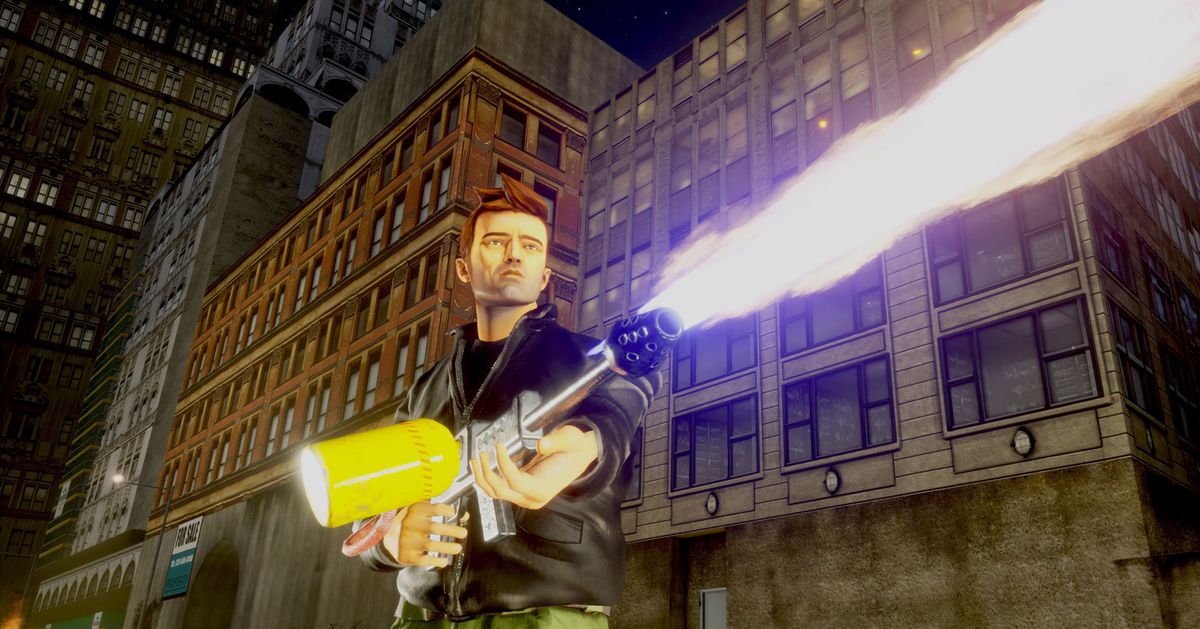
The release of Grand Theft Auto: The Trilogy — The Definitive Edition was, to put it lightly, a shitstorm. The remastered classics were replete with graphical issues and gameplay bugs, vestigial code, and missing songs. To pour salt on the wound, the original PC versions were delisted from digital storefronts on the day of the ports’ release. The work was shoddy and unfinished, and for many, these remasters were anything but the definitive versions Rockstar Games had promised.
Even so, I couldn’t stop playing. Despite this trilogy’s abundance of problems, Rockstar’s guns for hire at Grove Street Games had, intentionally or not, made these hallowed classics far more accessible.
Revisiting Grand Theft Auto 3, Grand Theft Auto: Vice City, and Grand Theft Auto: San Andreas was like seeing my first crush again — they showed signs of aging, sure, but the good parts did so like fine wine. While not perfect, the streets of each city looked new and clean, the cars had fresh coats of paint, and the glass on each building sparkled. I figured I would jump in, drive around a bit, then let the past recede again — but the trilogy soon hooked me. Before I knew it, I had beaten all three of these gritty adventures once more. It wasn’t just because the design cores of these games hold up so well, but for me, as a legally blind player with less time for trial and error, these classics are easier to march through than ever before.
Image: Grove Street Games/Rockstar Games
For me and many others with visual impairments, there is the ability to increase text size, not just with subtitles, but the information boxes as well. Seeing that larger text on the black backgrounds is incredibly useful and makes knowing what the game wants me to do much easier in some instances. It’s a small thing that even modern games don’t usually do. There is one bummer in this regard, though: The pause-menu text in the “briefs” section (which allows me to review critical mission info) is not affected by this change. In Vice City in particular, the pink text on white is atrocious to read.
Even so, I love just driving around in Grand Theft Auto. As someone who can’t skillfully operate a vehicle in real life, cruising through these digital urban worlds is something of an escape. Regardless, when it comes time to drive to a specific mission, the trilogy’s original minimaps could be hard to read. The Definitive Edition, however, offers more manual navigation options. This allows the player to set their own guided destinations, and presents a bolder line on the radar, thanks to the higher-resolution visuals, making it infinitely easier for me to catch every turn and not overshoot my destination.
Despite the new accessibility options, the most welcome change to The Definitive Edition, for me, is the art direction itself. Back when I played these games on a CRT, they had more haze, bloom, and blur around every corner. It could be hard to spot enemies or even see mission markers. Hidden packages remained unfound, and I lost count of how many friendly mission NPCs I accidentally ran over. Still, I persevered, and found enjoyment in these accomplishments despite the strain.
:no_upscale()/cdn.vox-cdn.com/uploads/chorus_asset/file/23131987/gtasanandreas2.jpg)
Image: Grove Street Games/Rockstar Games
With these HD incarnations, I’m seeing the world in a whole new (literal) light. With the increased contrast on almost every layer, lines are easier to see, colors pop, characters stand out, and I’m able to spot obscured items and important objectives at a much greater distance. Crisper visuals highlight the important items and leave a more muted background. Missions that used to give me a headache are now much more lucid, and on several occasions, I finished them in one go instead of wasting my first run trying to figure out what was going on. Everything is simply easier to process and keep up with, from reading GTA 3’s beeper, to spotting Tommy’s businesses in Vice City, to noticing available real estate properties in San Andreas. Now, when I’m trying to spot snipers, or weaving in and out of traffic, it’s like someone is finally letting me play the games I love with my glasses on for the very first time.
None of this is to mention the other wide-ranging additions that aren’t solely based on vision accessibility. Alongside their tighter controls, these ports include an aim assist and the ability to to hold the sprint button instead of constantly tapping it. There is also some limited ability to position the camera and adjust motion blur and bloom. These may seem like mere quality-of-life improvements to some, but for many, they’re godsends.
I imagine I’ll read a lot more hatred for these versions in the years to come. But The Definitive Edition remasters are how I plan to play the series from now on. Why would I go back to operating with a handicap? My dream would be to see a brand-new Grand Theft Auto learn from these releases — to establish new accessibility modes and options, pull back the layers of pretty graphics, and make sure that people like me can enjoy these games without undue stress. I know for many players, Grand Theft Auto: The Trilogy — Definitive Edition may be a terrible misnomer, or something to scoff at. But, despite all of its many flaws, the name strongly rings true for me.

Be the first to comment